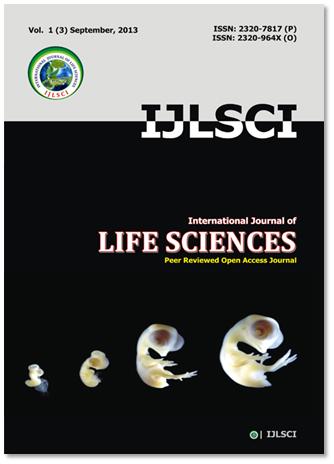Comprehensive Study of Organogenesis During Embryonic Development of Japanese Quail, Coturnix coturnix japonica.
Keywords:
Japanese Quail, morphogenesis, development, embryoAbstract
The avian embryo is unique for studying morphogenesis in birds. Today widely used model for experimentation is chick and the focus on the chick embryo has somewhat overshadowed the other avian species which can also prove to be of much importance. One avian species which is equally powerful is the Japanese Quail, Coturnix coturnix japonica. The Japanese Quail, due to its easy maintenance, early sexual maturity, shorter generation interval and high rate of egg production has become a pilot animal in the field of research.
In the present study, normal stages of chick embryo development were used as a basis for studying the development of quail embryo. Japanese Quail embryo takes approximately 17 days to hatch, a primitive streak were seen on Day 1 while Day 2 shows prominent somites. Eye pigmentation, beak region, various joints were seen on Day 4 and Day 5 respectively. On Day 9 and onwards there was prominent pigmentation were observed. Thus, the major objective of the present research work was to study the embryonic development of the Japanese Quail and to identify the period of incubation where the Japanese Quail embryo gives the faster ontogeny than chick embryo.
Downloads
References
1. Graham DL and Meier GW (1975) Standards of Morphological development of the J.quail, Coturnix coturnix japonica, embryo. Growth, 39: 389-400.
2. Grenier J, Teillet MA and Grifone R (2009) Relationship between neural crest cells and cranial mesoderm during head muscle development. PLoS ONE, 4, e4381.
3. Hamburger V and Hamilton HL (1951). "A series of normal stages in the development of the chick embryo". Journal of Morphology 88 (1): 49–92. doi:10.1002/jmor.1050880104
4. Koeck H (1958) Normal enstadien der Embryo-nalent wicklung bei der Hansente (Anas buschas domestica) Embryologia, 4; 55-78.
5. Le Douarin NM (2008) Developmental pattern deciphered in avian chimeras. Dev Growth Differ 50 (Suppl.1):511-528.
6. Lilja C, Blom J and Marks HL (2001) A comprehensive study of embryonic development of Japanese quail selected for different patterns of postnatal growth. J. Zool., 104: 115-122.
7. Lwigale PV and Scheider RA (2008): Other Chimeras: quail-duck and mouse-chick. Methods Cell Biol., 87: 59-74.
8. Mun AM and Kosin IL (1960) Developmental stages of the broad breasted bronze turkey embryo. Bio. Bull., 119: 90-97.
9. Padgett CS and WD Ivey (1960) The normal embryology of the Coturnix quail. Anat. Rec., 137: 1-11.
10. Rempel AG and Eastlick HL (1957) Developmental stages of normal white silkie embryos. Northw. Sci., 31: 1-13.
11. Zacchei A M (1961) The embryonal development of the Japanese quail (Coturnix coturnix japonica ) Arch. Ital. Anat. Embryol., 66: 36-62.
Downloads
Published
How to Cite
Issue
Section
License
Copyright (c) 2013 Authors

This work is licensed under a Creative Commons Attribution-NonCommercial-NoDerivatives 4.0 International License.
Open Access This article is licensed under a Creative Commons Attribution 4.0 International License, which permits use, sharing, adaptation, distribution and reproduction in any medium or format, as long as you give appropriate credit to the original author(s) and the source, provide a link to the Creative Commons license, and indicate if changes were made. The images or other third party material in this article are included in the article’s Creative Commons license unless indicated otherwise in a credit line to the material. If the material is not included in the article’s Creative Commons license and your intended use is not permitted by statutory regulation or exceeds the permitted use, you will need to obtain permission directly from the copyright holder. To view a copy of this license, visit http://creativecommons.org/ licenses/by/4.0/











